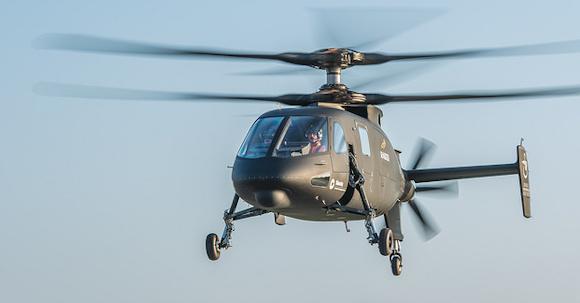The recent publication of a video (see below) concerning new flight tests of the Sikorsky S-97, which comes a short distance from the official release of an animation of a variant of the SB-1 "Defiant" for the Joint Multi-Role of the American Army (JMR) as well Future Vertical Lift (FVL), is a good opportunity to talk about possible developments of the helicopter, not only for military use by attack and assault.
The helicopter is an exceptional means for any strategic purpose, by virtue of its total freedom of movement, but everyone knows that its greatest limitations are essentially low speed and reduced autonomy.
The reason for the limited autonomy is easy to understand: an aerodynamic shape that is not very efficient in terms of resistance, and having to exploit the overwhelming majority of the driving power only for the sustenance of the weight are evident to anyone.
But the aerodynamics of a helicopter is a very complicated subject, and if designers at least 60 years (ie since the birth of the "Rotodyne" Fairy) try their hand at experimenting with the most imaginative solutions, it is precisely because the greedy operative opportunity that the helicopter offers it is something hardly renounceable.
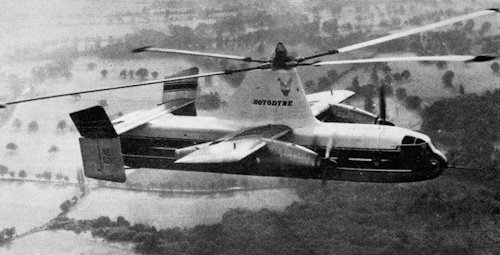
If from the civil point of view, the pursuit of this objective is proving not to be worth the investment profuse, from the military point of view, the possibility of being able to perform a certain type of tactical operations with today impossible ways passes over any logic of commercial convenience and pushes on the search for the solution of the old problem to be solved: to give the helicopter speed and autonomy.
The problem of autonomy in part is resolved indirectly already by increasing the speed, because if this comes to values such as to allow the weight of the aircraft to be supported with a couple of semi-axles, you can relieve the powerplant plant of the onerous task of having to overcome the weight of the aircraft, reducing consumption consistently.
And then the real project objective to be pursued is the overcoming of the current "endemic" causes that limit the speed of the helicopters.
First of all it is necessary to know that there is a phenomenon whereby the rotor blades develop a vertical force (called "lift" and which is opposed to the weight) asymmetric. This would essentially prevent the helicopter from flying, and therefore two major thought alternatives have been developed to find the solution.
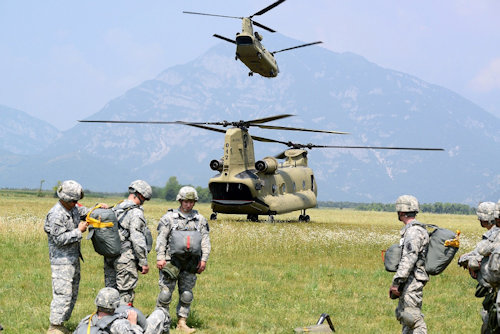 The problem derives from the fact that the blades, during their rotation motion, certainly describe a circumference, but that it should be analyzed as if it were two contiguous semicirconsferences. In the first half-circle the blades "advance" (because they rotate go in the same direction in which the helicopter is moving), while in the second semi-circumference "recede" (as their rotation leads them in the opposite direction to the helicopter motion). The composition of the forces that develop on the rotating blades, with the movement of translation of the helicopter, leads to a greater bearing on the blade that "advances" and a smaller one on that which "recedes".
The problem derives from the fact that the blades, during their rotation motion, certainly describe a circumference, but that it should be analyzed as if it were two contiguous semicirconsferences. In the first half-circle the blades "advance" (because they rotate go in the same direction in which the helicopter is moving), while in the second semi-circumference "recede" (as their rotation leads them in the opposite direction to the helicopter motion). The composition of the forces that develop on the rotating blades, with the movement of translation of the helicopter, leads to a greater bearing on the blade that "advances" and a smaller one on that which "recedes".
The first possibility of solving the problem, commonly used on the vast majority of helicopters in production, equipped with only one rotor per traction axle1 it allows to "recover" the lost lift from the blade that recedes through the continuous modification of its angle of pitching on the hub (which is increased) and then make the opposite correction when the same blade is going to advance rotating in the other semi-circumference. All this leads to significant problems of stability, vibration and mechanical fatigue of the components of the rotor and, worst of all, all these problems increase just as the speed increases!
The second alternative (in truth chronologically would be the first as already tested by Corradino D'Ascanio in 1929) would also be the apparently simpler solution to the problem: mount two counter-rotating coaxial rotors. A solution very welcome to the Russians who for decades have used it on their Kamov.
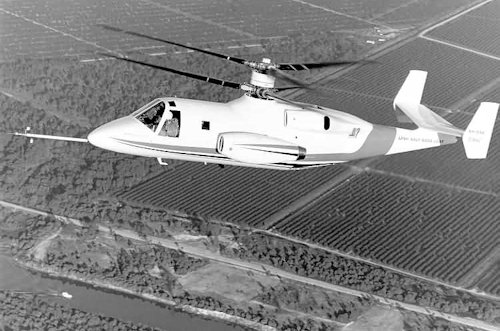 In the Sikorsky house2 the road of the double counter-rotating rotor arrives in 1973 with the XH-59A prototype (photo) on which a new type of rotor called "ABC" was developed (Advanced Blade Concept).
In the Sikorsky house2 the road of the double counter-rotating rotor arrives in 1973 with the XH-59A prototype (photo) on which a new type of rotor called "ABC" was developed (Advanced Blade Concept).
The "ABC" system also added the adjustment of the two backward blades in order to offer a lift equal to zero, to reduce their aerodynamic drag to further benefit speed and autonomy.
The historical period in which these first Sikorsky experiments took place that led to the S-97, the competitor Bell concentrated on the development of the convertiplans developing the XV-15, father of the current AW-609 to solve the problem of the binomial speed / autonomy of the 'helicopter.
In both cases the project was abandoned for many years, before being resumed, but with important differences between one company and another.
Sikorsky (today the star of the "Lockheed-Martin galaxy") took it back to the early 2000 years with the X2 prototype when new technologies and new materials allowed the construction of highly resistant blades with a tapered profile suitable for high speeds, upright a rigid rotor. But the project idea, although perfected, was essentially unchanged. Compared to the original 73 prototypes, the function originally performed by two small side jets is now carried out by a thrusting propeller in the tail, with variable pitch3. This can be disengaged by friction when a longitudinal velocity component is not needed (for example, when you have to stand still from the ground in "hovering"). This choice is absolutely more rational than the original idea of making use of jets, because the maximum speeds attainable, and the hypothetical mission profiles are such as to make the use of turbo-electric thrust more efficient. With the X2, which is the obvious direct precursor of what the S-97 should be, 270 KTS speeds were recorded, which is about twice that achievable with conventional helicopters, even if the dimensions are rather small of the prototype.
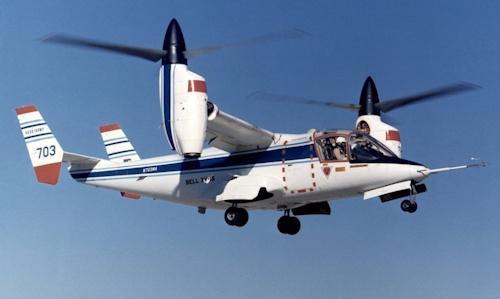 Bell, on the contrary, totally abandoned the development of the XV-15 (photo), and it is to be hoped that the design problems that have made the choice of abandonment, described in an excellent book published by NASA, are not been transported to the AW-609, given the substantial identity of the key elements of the project.
Bell, on the contrary, totally abandoned the development of the XV-15 (photo), and it is to be hoped that the design problems that have made the choice of abandonment, described in an excellent book published by NASA, are not been transported to the AW-609, given the substantial identity of the key elements of the project.
One thing, in fact, sadly unites the experiments made by both Sikorsky and Bell: having lost at least one prototype for having entrusted to electronics and software the correction of certain "hardware" problems induced by design choices perhaps too daring or not entirely cautious ... After all, we all know, any solution capable of generating advantages risks hiding from somewhere even some considerable and hidden counterparts that can be revealed unexpectedly and in the worst way.
The risk, if one wants to talk about risk, is that "between the two litigants, the third one will enjoy".
Maybe not in the competition to which the S-97 will participate, but perhaps in the actual future of the rotary wing machine.
In fact, in the same period in which Sikorsky developed the X2 and Agusta-Westland (today Leonardo) tried to complete the AW-609, other respectable builders proposed less complex ideas and perhaps higher efficacy.
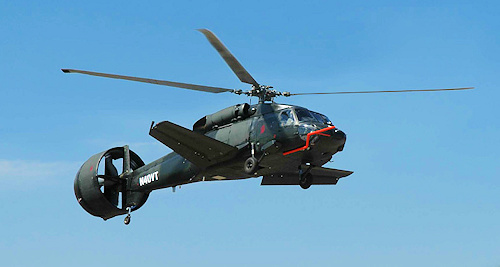 Boeing-VERTOL (reviving the glorious name Piasecki) showed the X-49 "Speedhawk" (photo), which basically proposes a Sikorsky SH-60 cell equipped with semitrails and a vortex flowable propeller.
Boeing-VERTOL (reviving the glorious name Piasecki) showed the X-49 "Speedhawk" (photo), which basically proposes a Sikorsky SH-60 cell equipped with semitrails and a vortex flowable propeller.
Bell, with its V-280 convertible "Valor" still offers a Sikorsky SH-60 cell with an aerodynamic and propulsive sustaining architecture purged of certain flaws highlighted by both the XV-15 and V-22 Osprey experiments.
Airbus Helicopter - fu Eurocopter - has developed the X3 simultaneously with the Sikorsky X2 (and the name chosen for its technological demonstrator, leaves no doubt about being in obvious challenge)
The advantages of the formula chosen for the S-97 are certainly numerous.
It is not known what may be the disadvantages that may constitute the counterpart of its architecture, but what seems quite certain is that of many projects developed by the various manufacturers in a period of time and with the use of resources that make it possible to find the care for many diseases, the S-97 is perhaps the first project (and who knows that it is not the only one) to become a reality.
Read also: "AW-609: When Finmeccanica cares for you ..."
Note:
1 - So not in the case of bi-rotor helicopters such as. the CH 47 "Chinhook" which has two rotors, but having two traction axes behaves as if it were made up of two "welded" single-rotor helicopters together
2 - Igor Sikorsky, founder of the homonymous company was Ukrainian, then US national
3 - In conventional helicopters, translation is accomplished by inclination of the rotor. The inclination thus obtained of the rotor rotation plane has a horizontal component which, although small, allows longitudinal and lateral displacements.
(photo: Lockheed Martin / web / US Army / NASA / Boeing)

